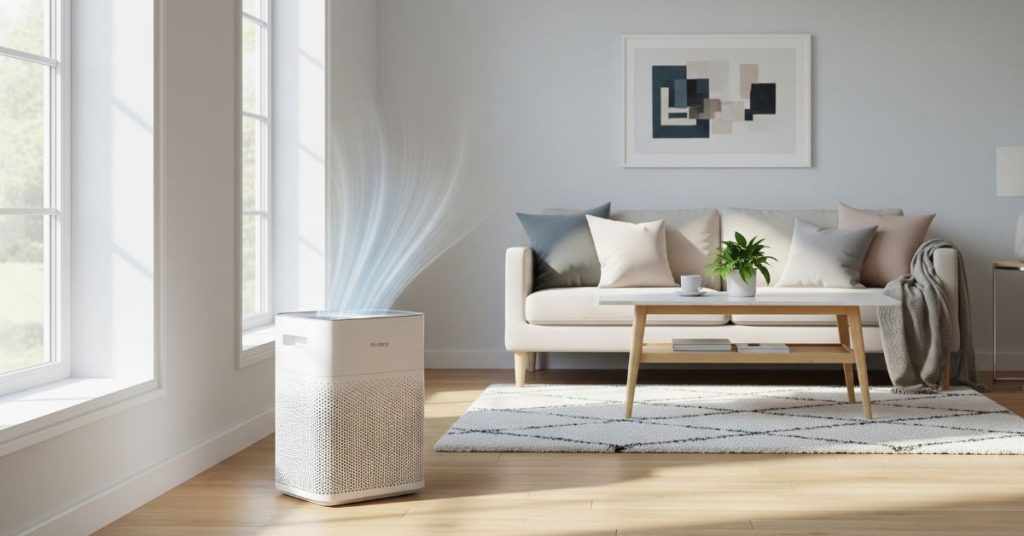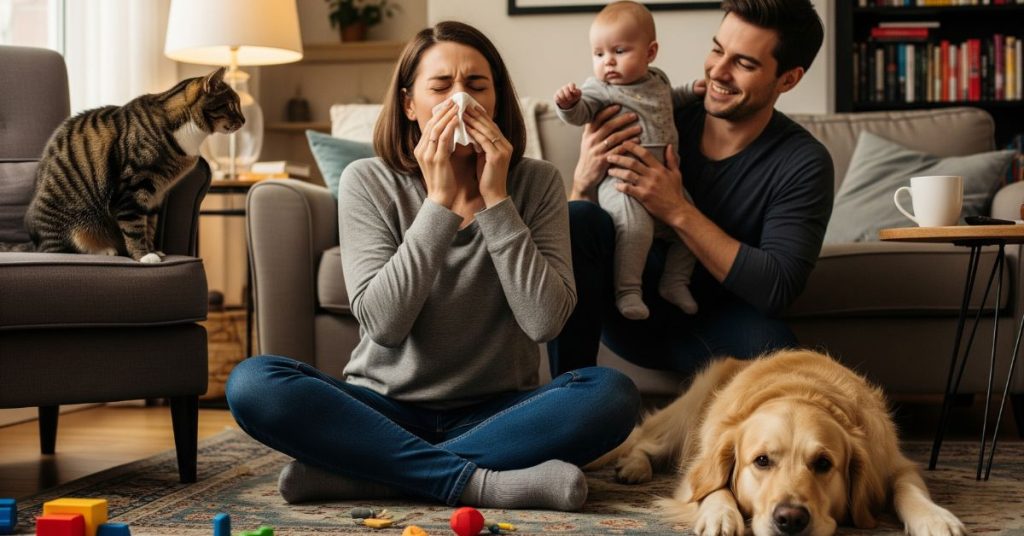Yes, air purification after duct cleaning helps maintain cleaner indoor air by capturing lingering particles and allergens, ensuring a healthier environment long-term.
Key Takeaways:
- Enhances indoor air quality
- Captures residual dust and allergens
- Supports long-term HVAC efficiency
- Promotes healthier breathing environment
Maintaining clean indoor air is more than just a matter of comfort; it’s directly connected to your family’s health and the efficiency of your home systems. While air duct cleaning is an essential step to removing built-up dust, allergens, and contaminants from your HVAC system, many homeowners wonder if this service alone is enough. The question remains: do you need air purification after air duct cleaning? The short answer is yes—air purification takes indoor air quality to the next level, ensuring your living environment stays consistently fresh and safe.
According to the U.S. Environmental Protection Agency (EPA), poor indoor air quality can contribute to respiratory problems, allergic reactions, and even long-term illnesses—highlighting the importance of regular duct cleaning and air purification for a healthier home.
Why Air Duct Cleaning Alone May Not Be Enough
When your ducts are cleaned, accumulated dust, pet dander, pollen, mold spores, and debris are removed from the system. However, this does not prevent new pollutants from entering your home. Everyday activities—like cooking, smoking, cleaning, or even opening windows—allow new contaminants into the air. Without an air purification system, these particles will circulate again, even through freshly cleaned ducts.
Additionally, some particles such as volatile organic compounds (VOCs), microscopic bacteria, and viruses are too small to be eliminated by duct cleaning alone. That’s where air purification makes the real difference.
How Air Purification Enhances Indoor Air Quality

An air purification system works as a continuous safeguard against airborne pollutants. Here’s how it complements air duct cleaning:
- Removes Microscopic Particles: HEPA filters and advanced purifiers can trap pollutants as small as 0.3 microns, including bacteria and allergens.
- Neutralizes Odors: From pet smells to cooking fumes, air purifiers help maintain a fresher indoor environment.
- Kills Germs and Viruses: UV light air purifiers target microorganisms, ensuring healthier air circulation.
- Reduces Allergies and Asthma Triggers: By capturing allergens that cleaning cannot permanently eliminate, purifiers help sensitive individuals breathe easier.
- Controls Mold Growth: Air purifiers with UV or ionization features can inhibit mold spores, preventing regrowth after duct cleaning.
Improves Sleep Quality: Cleaner air can reduce nighttime congestion and irritation, leading to more restful and uninterrupted sleep.
The Role of HEPA Filters in Air Purification
One of the most effective tools in modern purification systems is the High-Efficiency Particulate Air (HEPA) filter. Designed to trap up to 99.97% of airborne particles as small as 0.3 microns, HEPA filters are especially beneficial in homes with children, elderly individuals, or anyone with asthma or allergies. They effectively capture dust, pollen, pet dander, mold spores, and even some bacteria.
The Centers for Disease Control and Prevention (CDC) recommends the use of HEPA filtration and proper ventilation in homes and buildings to reduce airborne transmission of viruses and improve overall indoor air quality.
When used alongside freshly cleaned air ducts, HEPA filters help prevent the rapid reaccumulation of pollutants. This combination ensures long-term indoor air quality by continuously filtering contaminants before they circulate, promoting a cleaner and healthier breathing environment.
UV Light Air Purifiers: An Extra Layer of Protection
While duct cleaning effectively removes visible dirt and debris, it doesn’t fully address the presence of microorganisms like mold, bacteria, and viruses that can thrive in damp or humid conditions. This is where UV-C light purifiers offer a significant advantage by providing continuous, invisible protection against airborne pathogens.
UV-C light purifiers work by emitting ultraviolet light that penetrates and disrupts the DNA of harmful microorganisms, rendering them inactive. This sterilization process ensures that the air circulating through your HVAC system is not just clean, but also sanitized for improved health and safety.
Air Purification vs. Air Duct Cleaning: Understanding the Difference
It’s important to understand that air duct cleaning and air purification serve different purposes:
- Air Duct Cleaning: Focuses on removing built-up dirt, debris, and contaminants inside the HVAC ductwork.
- Air Purification: Continuously filters and sanitizes air as it circulates throughout your home.
Together, they create a comprehensive solution for maintaining superior indoor air quality. Relying on duct cleaning alone is like deep cleaning your home once, but never dusting or vacuuming again—it doesn’t provide ongoing protection.
When Should You Consider Air Purification After Duct Cleaning?
Certain situations make air purification especially valuable after duct cleaning:
- Allergy and Asthma Sufferers: Sensitive individuals need ongoing protection from allergens and irritants.
- Homes with Pets: Pet dander and odors quickly return after duct cleaning without filtration support.
- Smokers Indoors: Tobacco smoke lingers in the air and requires active purification.
- Urban Living: City homes face more exposure to outdoor pollutants, smog, and VOCs.
- Families with Infants or Seniors: These groups are more vulnerable to respiratory issues and need consistently clean air.
- Post-Renovation Homes: Construction and remodeling introduce fine dust, chemicals, and VOCs that linger even after cleaning.
- Mold-Prone Environments: Homes in humid or damp areas benefit from purification to prevent and control mold spore circulation.

Energy Efficiency Benefits of Air Purification
In addition to health benefits, air purification systems improve HVAC efficiency. By filtering out dust, pollen, and other airborne particles, these systems prevent debris from accumulating inside your heating and cooling units. This reduces wear and tear, allowing the system to operate more smoothly and with less effort.
When paired with regular duct cleaning, air purification helps maintain unobstructed airflow and cleaner internal components. This not only extends the lifespan of your HVAC system but also lowers energy consumption, resulting in reduced utility bills and fewer maintenance issues over time.
According to ENERGY STAR’s guidance on indoor air quality features in certified homes, properly installed MERV‑6 (or better) filters help trap dust, allergens, and other triggers—supporting both cleaner air and HVAC efficiency.
Professional Installation vs. Portable Air Purifiers
Homeowners often debate whether to invest in a whole-home purification system or rely on portable purifiers. While portable units can provide temporary relief in small rooms, they cannot match the coverage and efficiency of a professionally installed system integrated into your HVAC.
- Portable Purifiers: Best for small, specific areas. Affordable but limited in scope.
- Whole-Home Purification Systems: Provide complete coverage, integrate seamlessly with ductwork, and deliver consistent results throughout the house.
For long-term health and efficiency, whole-home systems are the superior choice after duct cleaning. For example, installing a system like the Air Scrubber can provide advanced protection by reducing airborne contaminants and surface pollutants throughout the entire home.
Maintaining Air Purification Systems for Best Results
Just like ducts require periodic cleaning, air purifiers also need regular maintenance. Common steps include:
- Replacing Filters: HEPA and carbon filters should be replaced as recommended by manufacturers.
- Cleaning UV Bulbs: UV purifiers require bulb replacements every 1–2 years for optimal performance.
- Monitoring Air Quality: Smart purifiers can track indoor air quality, helping you stay proactive.
With proper care, purification systems continue to deliver clean, breathable air long after duct cleaning is done.
The Bottom Line: Do You Need Air Purification After Air Duct Cleaning?
Yes—air purification is the essential next step after duct cleaning. While duct and vent cleaning removes built-up dust, allergens, and contaminants from your system, it doesn’t stop new pollutants from entering your home. Air purification ensures ongoing protection by capturing lingering particles, neutralizing odors, and reducing bacteria, mold, and allergens. This combination not only enhances indoor air quality but also supports better HVAC maintenance, keeping your system efficient and extending its lifespan.
For homeowners who value a healthier environment and long-term comfort, pairing duct and air vent cleaning with air purification is a smart investment. Call the trusted team at 5 Star Air today to schedule professional service and breathe easier every day.
